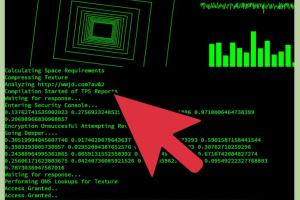Mastering the Art of Illusion: How to Make It Look Like You Are Hacking

-
Quick Links:
- Introduction
- Understanding Hacking
- The Psychology of Hacking Illusions
- Tools You Need
- Setting the Scene
- Creating the Illusion
- Case Studies and Examples
- Expert Insights
- Legal Implications
- FAQs
Introduction
In a world where technology plays a pivotal role in our day-to-day lives, the allure of hacking has made its way into popular culture. From movies to memes, the image of a hacker tapping away at a keyboard, surrounded by green text on a black screen, has become iconic. But what if you want to recreate that illusion? Whether for a video project, a prank, or a themed party, this guide will provide you with everything you need to make it look like you are hacking.
Understanding Hacking
Before diving into the illusion, it's crucial to understand what hacking really is. At its core, hacking refers to the manipulation of computer systems and networks. While often associated with malicious intent, hacking can also be a legitimate pursuit, with ethical hackers (or white-hat hackers) working to improve security.
Some common misconceptions about hacking include:
- All hackers are criminals.
- Hacking requires advanced programming skills.
- Hacking is only done by individuals.
The Psychology of Hacking Illusions
Creating a convincing hacking illusion is not just about technical aspects; it also involves understanding how people perceive hacking. The aesthetics of hacking are deeply rooted in fear, intrigue, and curiosity. By understanding these psychological triggers, you can enhance your illusion.
Tools You Need
To effectively simulate hacking, you will require a mix of software and hardware tools. Here are some essentials:
- Terminal Emulators: Programs like Terminus or Komodo IDE can mimic terminal interactions.
- Hacking Simulation Software: Tools like Hackertyper allow you to type random text and make it look like hacking.
- Video Editing Software: Software such as Adobe Premiere Pro can help you create professional-looking hacking videos.
- Sound Effects: Incorporate sound effects that evoke the feeling of hacking, such as keyboard typing and error beeps.
Setting the Scene
The environment plays a crucial role in creating the hacking illusion. Consider the following elements:
- Lighting: Use dim lighting to create a mysterious atmosphere.
- Background: A cluttered desk with multiple monitors can enhance the illusion.
- Costuming: Dress in a manner that aligns with the hacker stereotype, such as hoodies and dark clothing.
Creating the Illusion
Now that you have the tools and setting, it's time to create the illusion. Follow these steps:
- Select Your Scenario: Decide if you are going for a serious hacking scene or a comedic one.
- Choose Your Software: Use one of the terminal emulators or hacking simulation software mentioned earlier.
- Generate Fake Code: Use online generators to create realistic-looking code snippets that you can display on your screen.
- Integrate Sounds: Play sound effects in the background to give authenticity to the scene.
Case Studies and Examples
To further understand how to create a convincing hacking illusion, let’s look at some case studies:
- Case Study 1: A popular YouTube channel successfully created a hacking video using simple editing techniques and sound effects.
- Case Study 2: An artist used hacking imagery to make a statement at an art installation, combining visual art with digital aesthetics.
Expert Insights
We gathered insights from professionals in the field of cybersecurity and digital art. Here are some key takeaways:
- Always respect privacy and security regulations when simulating hacking.
- Understand the technical aspects of hacking to create more realistic illusions.
Legal Implications
While simulating hacking can be fun, it’s essential to be aware of the legal implications. Engaging in unauthorized hacking can lead to serious consequences. Always ensure your actions are ethical and legal.
FAQs
- 1. Is it legal to simulate hacking?
- Yes, as long as it's done in a safe environment and without malicious intent.
- 2. What tools can I use to create a hacking illusion?
- Terminal emulators, hacking simulation software, and video editing software are great tools.
- 3. Can I use this for educational purposes?
- Absolutely, simulating hacking can be a fun way to teach others about cybersecurity.
- 4. How can I make my illusion more convincing?
- Focus on the environment, use realistic sound effects, and incorporate actual coding snippets.
- 5. Are there any risks involved?
- As long as you stay within legal boundaries, the risks are minimal.
- 6. Can I use this in a video project?
- Yes, many creators use hacking illusions in their video projects for storytelling.
- 7. What if someone takes it seriously?
- Always clarify that it's a simulation to prevent misunderstandings.
- 8. Is there a specific age group this content is suited for?
- This content is generally suitable for teens and adults interested in technology.
- 9. Can I sell content that includes hacking illusions?
- Yes, but ensure it adheres to copyright laws and ethical guidelines.
- 10. How do I learn more about hacking?
- Consider taking online courses or reading books on cybersecurity.
Random Reads
- How to set up ftp between two computers
- How to set up ethernet
- How to replace bathroom tiles
- How to remove mold and mildew
- How to remove mold from bags
- Simple ways to erase and reset your computer
- How to replace battery in your pc
- How to paint an exterior door
- How to paint concrete wall
- How to stain brick